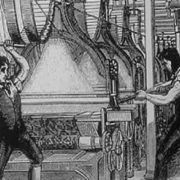The Economic Way Of Thinking Can Help You Make Better Decisions.
Game theory, according to John von Neumann and Oskar Morgenstern, whose Theory of Games and Economic Behavior is widely considered the foundational text for the subdiscipline, is the rigorous analysis of interactions between participants facing various alternatives and the rules under which they may make these choices. This captures, and can be extended to, all human interaction and the economy at large. In my mind, game theory quickly becomes this neat intersection of micro and macro skills. It trains its practitioners in the art of individual decision making (individually maximizing payoffs among various options), taking other people’s choice sets into account, and analyzing the systemic outcomes that result from their interaction. In a direct way, it hones the very skills that matter most for an economist’s mindset: understanding opportunity costs, embracing backward induction by thinking through the various domino effects of my – or others’ – actions, and the system-wide outcomes that follow from that. In this sense, game theory helps us think about Henry Hazlitt’s great message in Economics in One Lesson: the foundational economic point that
the art of economics consists in looking not merely at the immediate but at the longer effects of any act or policy; it consists in tracing the consequences of that policy not merely for one group but for all groups.
This framework allows us to see counterintuitive things and understand that many direct, commonsensical solutions to perceived ills are usually not very good ones. Take rent control: if the problem is too high rents, we can forbid landlords to charge more than some maximum amount of dollars – with the counterintuitive result that fewer landlords offer up their apartments on the market, fewer people build houses, and the underprivileged renters you intended to help have an even harder time finding accommodation. A well-intended policy backfires.
We can invoke Yale psychologist Paul Bloom’s excellent case against empathy, where our small-scale acts of empathy for the visible and familiar cause disproportionate harm to the invisible and unfamiliar or waste resources with very little to show for it — another case of well-intended actions backfiring.
Or we can provide an example from his colleague Shane Frederick’s CRT personality test for identifying intuitive and deliberative people: if it takes 5 machines 5 minutes to make 5 widgets, how long would it take 100 machines to make 100 widgets?
Before our analytically apt and arithmetically trained brains have a chance to ponder the answer, the intuitive parts of most people’s minds have blurted out the incorrect answer of “100 minutes.” Or take this one, which I first encountered in a behavioral-economics class many years ago: a bat and a ball cost $1.10 in total. The bat costs $1.00 more than the ball. How much does the ball cost?
Again, many people’s intuitive and shortcut-prone minds subtract a dollar from $1.10 and answer “10 cents” before they have a chance to realize that 0.10 + (0.10 + 1) equals $1.20 – not $1.10 as stated in the question. Intuition has clearly gone wrong.
Libertarians have for years made similar arguments about the Drug War. As the Economist’s Britain editor Tom Wainwright showed in his celebrated book Narconomics, officials and their gut reactions to counter drug abuse have left many parts of Latin America in shambles, condemned coca farmers to a life of misery, and contributed to more than the continent’s fair share of narco-trade violence – yet has virtually nothing to show for it in terms of reducing drug supply or the number of people using them. Looking at the opioid crisis – quite the opposite.
The high value-added from an initially low-value crop means that even impressive reductions in the size of coca plantations are easily offset by efficiencies in other parts of the supply chain. Farmers in other jurisdictions simply expanded their coca production in response to crops destroyed elsewhere, leaving individual farmers without revenue but not meaningfully impacting total drug production. A well-intended (albeit paternalistic) policy to protect people from harmful substances ends up contributing to more misery elsewhere, with ultimately very few people protected at home.
This is to suggest that most of our intuitions about the world (and suggested solutions to its ills) are plainly wrong, and that rigorously thinking through them may keep us from taking, supporting, or enacting pretty harmful policies.
Enter Environmental Issues
I like to write about the environment because its vast challenges seem to cause even well-meaning and highly intelligent people to fall prey to their intuitions; their otherwise prudent judgments quickly fly out the window – sometimes even those with some training in economics.
Take nature, the destruction of which left-leaning commentators for years have considered the ultimate failure of capitalism; the activist Naomi Klein even titled her book This Changes Everything: Capitalism vs. the Climate. The desire to feel good impels us to save turtles, replace our plastic straws, recycle raw materials, protect endangered species, reduce paper use, not fly, and the rest of the list that comes with the modern environmentalist creed.
The problem? None of these things achieve the ends their proponents allegedly hold dear. Wasting countless financial and environmental resources to save a handful of turtles might marginally benefit some local ecosystem, but it comes at the much-too-steep expense for the climate that the turtle savior so ardently favors. Recycling most raw materials is more resource- and energy-intensive than digging up new ones. Neither are plastic straws or bags the source of the problem with which they are associated, nor do their metal or bamboo or paper replacement products break even in terms of resource use (at least not for hundreds or thousands of uses – a diligence most people in most places don’t have).
Killing animals in places where property rights over animals have been established doesn’t actually decimate the species. Instead it usually provides the financial incentive to keep more of them alive; hunting endangered animals increases their total numbers rather than diminishing them because the person selling the hunting service now better protects the remaining animals – and has a huge stake in assisting their reproduction. Ecotourism can also have this impact by making gorillas or elephants or rhinos more valuable alive than dead and tying the livelihood of poachers to the preservation of these majestic animals instead of killing them.
But my favorite example is paper, this wholly renewable resource that almost literally springs out of the earth. At the bottom of most corporate emails are kind requests not to print the email unless absolutely necessary. Conserving paper, the reasoning goes, conserves trees; chopping down fewer trees results in more forests.
“Dead wrong,” to invoke Johan Norberg’s well-known videos on the Free to Choose Network.
Most material used to make paper products in the U.S. doesn’t even come from newly chopped down trees; it comes from milling residues or recycled paper. Globally, something like three-quarters of pulp production comes from private, commercially run plantation properties where their owners have every incentive to replenish the forests they periodically clear. A high financial value assigned to dead trees from which we make paper results in the counterintuitive consequence of forest owners planting more trees and expanding their forests – not deforesting the earth.
The (comparatively minor) clearing of the Amazon is rarely done for paper-making purposes, but rather for household firewood or to plant agricultural products like palm oil or soybeans. That might have moral implications for some of our consumption decisions, but refusing to use paper and ceasing to print emails would make little sense if you’re worried about rainforests.
Game theory and economic thinking at large force us to think through these changing effects, supply responses, and relevant elasticities. What happens to the system might differ from what seems to be the outcome of an individual’s action.
The world is dynamic, not static; it is equilibrating and adjusting, not mechanical. The economic way of thinking teaches us that.








